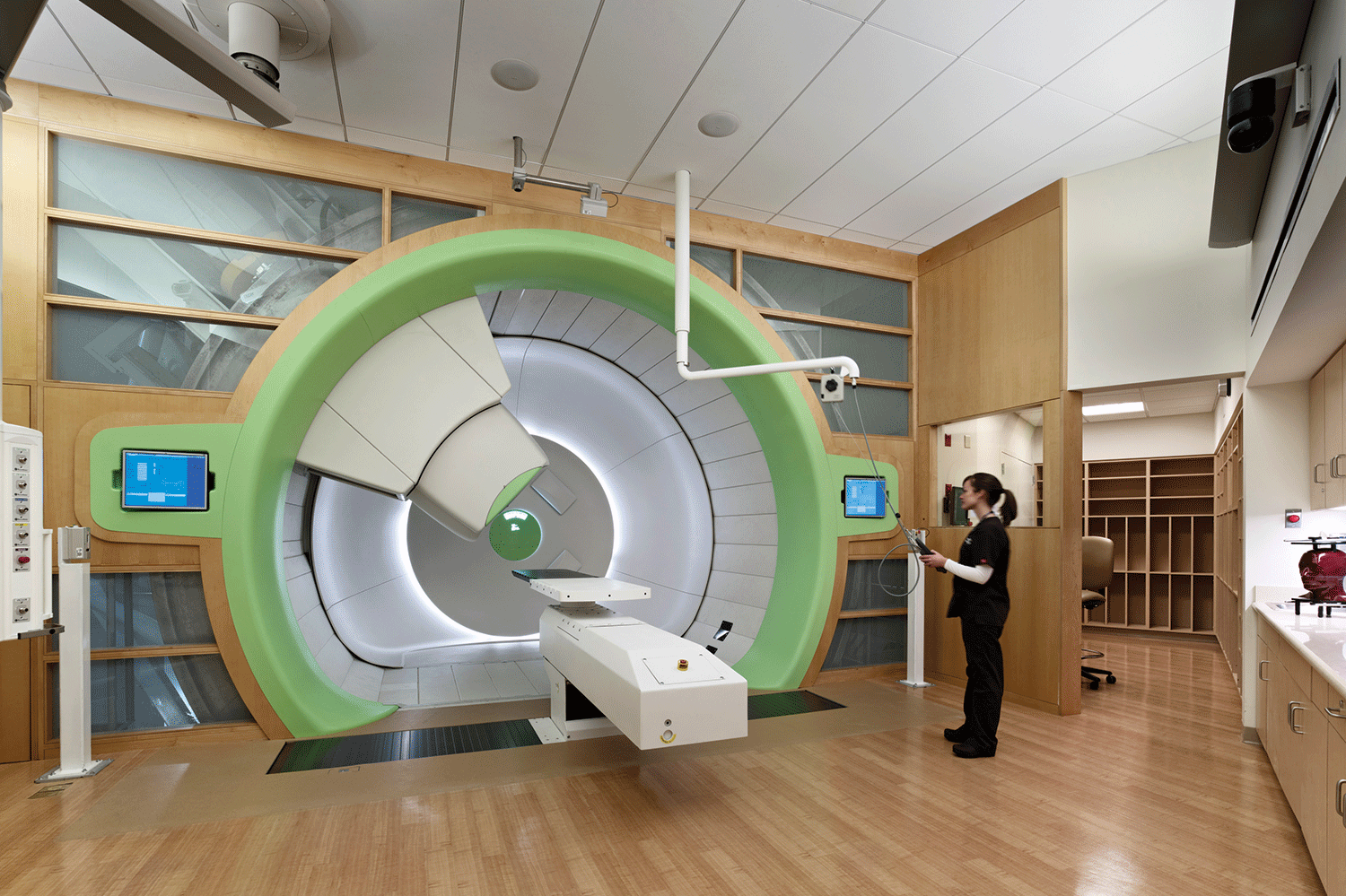The ideal radiation therapy would target cancer cells with a lethal dose of energy while sparing nearby healthy tissue. Advocates of proton beam radiation are touting it as just such a treatment, and the buzz has been infectious: Since 2001 the number of centers in the United States that offer the therapy has grown from three to 12. Eight more are being developed or built now, each costing more than $100 million. Yet so far no one knows if proton beam radiation is really better than standard X-ray radiation treatment—an important consideration particularly for the prostate cancer patients to whom it’s already heavily marketed.
Proton beam radiation is appealing because it has the potential to deliver high-energy beams to a tumor but only low doses to nearby healthy tissue, which may reduce side effects. In contrast, conventional X-ray radiation may deliver toxic doses to nearby healthy tissue en route to and from the tumor.
Clinical trials comparing protons to X-ray radiotherapy are under way, but virtually none have shown proton beam radiation to be more effective at controlling cancer than X-ray radiation. However, because proton therapy may minimize radiation to the tissue surrounding a tumor, doctors often prescribe it for cancers in and around sensitive places like the eye, brain and spinal cord. Proton therapy also is often indicated for many pediatric solid tumors, both because few treatments are available for these cancers and because radiation can have long-term side effects in children.
It’s proton therapy’s use in prostate cancer that has generated controversy. Proponents note that studies based on patient surveys have suggested a reduction in side effects like urinary or bowel incontinence, painful urination, or painful bowel movements. In addition, less radiation to surrounding tissue reduces the long-term risk of a second cancer compared with use of conventional radiotherapy, says radiation oncologist Carl Rossi, the medical director of the Scripps Proton Therapy Center in San Diego, which is slated to open this summer. “In a clinical context, if you spare normal tissue and don’t treat it, you won’t hurt it,” he says. “Protons, by their nature, always do a better job of minimizing side effects because,” he asserts, “they always treat less tissue.”
But other studies suggest prostate cancer patients who receive proton therapy don’t see a side-effect benefit. In the April 2012 issue of Radiotherapy and Oncology, a report from members of the American Society for Radiation Oncology (ASTRO) emerging technology committee stated it had found “no suggestion” that proton therapy is superior to X-ray radiotherapy in the treatment of prostate cancer. That same month, a study of nearly 13,000 men published in the April 18, 2012, Journal of the American Medical Association indicated that prostate cancer patients treated with proton therapy were more likely to face gastrointestinal side effects than those treated with intensity-modulated radiation therapy (IMRT)—a form of X-ray radiotherapy.
Results published in the Jan. 2 Journal of the National Cancer Institute did little to clarify things. A team led by James Yu, a radiation oncologist at the Yale School of Medicine in New Haven, Conn., reviewed Medicare records of nearly 55,000 prostate cancer survivors and found evidence that proton therapy may be associated with small reductions in urinary side effects—but only within the first six months of treatment. After that, Yu says, “We found no difference [in these side effects] between proton radiation and IMRT.” A robust clinical trial now recruiting patients will directly compare side effects from proton and conventional radiation in prostate cancer patients.
Studies suggesting that proton therapy may offer no benefit over standard radiation are attracting particular attention because the treatment is so expensive. Yu’s study found that proton radiation netted a median Medicare reimbursement of $32,428 per prostate cancer patient, significantly higher than the $18,575 for IMRT. (The expense for patients not on Medicare depends on the individual’s insurance carrier.) This led Mary Feng, a radiation oncologist at the University of Michigan Health System in Ann Arbor, to point out in an editorial accompanying Yu’s study that these higher reimbursement rates make proton therapy highly profitable when marketed to a large patient population like men with prostate cancer, but that the treatment may not deliver better care.
Andrew Lee, a radiation oncologist at the University of Texas M. D. Anderson Cancer Center in Houston, which opened its proton radiation center in 2006, counters that cost shouldn’t be the sole basis of care. He also notes that patients making treatment decisions may not view the data about side effects in the same way as a researcher. “If … you have prostate cancer, you might have a different perspective,” he says.
Efforts now under way to improve how the proton radiation beam is delivered could make it a better option in the future, says Feng. “I think it’s a fantastic technology, and in a couple of years it will be great,” she says. However, she does not recommend that her patients go to a center that offers proton therapy for prostate cancer unless they are enrolled in a clinical trial.
Cancer Today magazine is free to cancer patients, survivors and caregivers who live in the U.S. Subscribe here to receive four issues per year.





